For first-time growers, there’s a lot to take in—from cannabis culture to understanding what trichomes are, how they function, and why they matter. It can feel overwhelming at first.
Take a closer look at a marijuana plant and you’ll spot the frosty, crystal-like coating on the buds. These are called trichomes—tiny structures that act as the plant’s natural defense system. They produce a sticky resin that not only gives weed its signature aroma and flavor but also contains the plant’s cannabinoids and terpenes.
As your plants begin flowering, these trichomes help protect them from pests, animals, and harmful UV rays. But for growers, trichomes are also crucial indicators of potency and harvest timing. If you’re looking to cultivate top-shelf bud, you’ll want to focus on strains with the most trichomes.
Why does this matter? Because strains with the most trichomes often deliver more intense aromas, richer flavors, and higher concentrations of THC or CBD. They’re a favorite not only among home growers but also among extract artists seeking maximum resin yield for concentrates.
Whether you’re growing indoors or outdoors, choosing strains with the most trichomes can be the difference between an average harvest and truly premium flower. Trichome density can vary based on genetics, environment, and care—but starting with the right strain is half the battle.
Keep reading to explore which strains with the most trichomes stand out, and how to grow them successfully for maximum resin production.
Trichomes are the resin glands of the marijuana plant and one of the most reliable physical indicators of a strain’s potency. These tiny, hair-like structures often appear gray or crystal clear, giving the plant a frosty, sparkling look. In fact, many of the strains with the most trichomes are prized for both their visual appeal and their high cannabinoid content.
Trichomes aren’t just for show—they’ve played a critical role in advancing cannabis as medicine. One notable example is Charlotte Figi, whose seizures were dramatically reduced using a tincture made from trichomes of a CBD-rich strain. That strain, Charlotte’s Web, was named in her honor.
These tiny resin glands begin to form as the plant enters the flowering phase. As buds develop, trichomes appear on flowers, leaves, and stalks, helping growers determine the ideal time to harvest. For cultivators aiming to grow strains with the most trichomes, monitoring this development is essential for timing and quality.
Beyond their importance for potency and harvest timing, trichomes—sometimes referred to as pistils in casual usage—also act as a defense mechanism. The more trichomes a plant produces, the better it’s protected against pests, UV rays, and environmental stress. That’s why strains with the most trichomes tend to be not only potent, but also resilient and robust under various growing conditions.
Trichomes differ in type, structure, and size. In marijuana plants, there are three main types of trichomes, often grouped into two broad categories based on their function and morphology.
Non-glandular trichomes are types of cannabis hairs that lack glandular heads. They can be unicellular or multicellular, branched or unbranched. Most of these are simple and star-shaped. While they don’t produce cannabinoids, they still serve essential roles in protecting the plant from pests and environmental damage.
Glandular trichomes are what make certain feminized strains sparkle with potency. They are responsible for producing cannabinoids like THC and CBD, as well as aromatic terpenes. These resin-producing pistils are especially important in strains with the most trichomes, as they’re used in making concentrates, topicals, and even infused beauty products.
In fact, strains with the most trichomes tend to be preferred by extractors and growers aiming for maximum resin yield. That thick, sticky coating isn’t just for looks—it’s packed with medicinal and recreational value.
Among the different trichome types, those found in strains with the most trichomes—especially capitate-stalked trichomes—are the most valued for their density and cannabinoid content.
Understanding the differences can help you choose strains with the most trichomes when you’re shopping for seeds or planning your next grow cycle.
Bulbous trichomes are the tiniest and most difficult to spot with the naked eye. Although they’re found all over the surface of a cannabis plant, their microscopic size means you’ll need a magnifying tool to truly observe them. They don’t produce significant cannabinoids but still play a minor role in plant protection.
These trichomes are slightly larger than bulbous ones but still require at least a magnifying glass to inspect clearly. Capitate-sessile trichomes start to introduce cannabinoid production, although in smaller amounts compared to their larger cousins. They are more common across the plant’s surface, particularly during flowering.
This is the most abundant and visible type of trichome in high-THC cannabis strains. Capitate-stalked trichomes are large enough to be seen without magnification and contain the highest concentrations of cannabinoids and terpenes. They are the hallmark of strains with most trichomes and are heavily sought after for extraction and concentrate production.
Strains with most trichomes tend to offer better protection against harmful UV rays, strong weather conditions, and fungal spores. These tiny structures serve as the plant’s natural defense system while also producing the cannabinoids and terpenes that contribute to potency and aroma.
The number of capitate-stalked pistils on the surface of marijuana plants grows during the flowering stage. Before this point, weed plants are mostly covered with bulbous pistils and capitate-sessile trichomes, which are less potent but still contribute to resin production.
As your plant starts to mature, these trichomes become more visible on its surface. While some types develop earlier than capitate-stalked ones, they are not easily visible without tools like microscopes or magnifying glasses. This is why growers often aim to cultivate strains with most trichomes for higher yields of cannabinoids and better protection.

In other cases, pistils can be removed if you prefer to get extracts such as essential oils, wax, hash, or shatter. Other than that, pistils also serve as indicators for weed growers. It acts as a signpost that tells you when weed plants are ready to harvest, especially in strains with most trichomes, where timing is essential to preserve potency.
Pistils change in color. However, such changes may not be visible to your naked eye. A little help with tools like a magnifying glass will better help you determine the accurate signs.
When trichomes turn from clear to cloudy, this indicates that the marijuana plant is ready to harvest. If you wait a little longer, the THC level will convert into cannabinol, which causes it to turn to amber. This transition is especially important to monitor in strains with most trichomes, since it can drastically affect the final cannabinoid profile.
Most growers tend to wait for it to turn to amber. This will transform the buds with a perfect mix of THC and cannabinol which provides more potent effects.
The main role of trichomes in every cannabis plant is to produce cannabinoids—and to do this, the plant first generates CBGA, often referred to as the “mother cannabinoid.” Once CBGA is produced, the plant converts it into major cannabinoids like THCA, CBDA, and CBCA, which eventually become THC, CBD, and CBC through decarboxylation.
Trichomes are not just resin factories; they are critical biological structures. According to research published in Frontiers in Plant Science, trichomes serve multiple roles in plant defense, aiding in protection against UV radiation, herbivores, and environmental stress, while simultaneously playing a central role in the synthesis of secondary metabolites like cannabinoids and terpenes.
However, trichomes are highly sensitive and can degrade easily with exposure to heat, light, oxygen, and physical contact. For growers aiming to preserve potency and flavor, it’s crucial to protect buds from harsh environmental conditions, especially during and after harvest.
Now, moving to the most awaited part. You must be curious to know which strains with the most trichomes truly stand out. As we all know, not all weed strains are created equal—each one varies in its levels of cannabinoids, terpenes, and flavonoids.
Some strains with the most trichomes may develop dense, sticky buds packed with resin, while others may appear milder but still deliver strong psychoactive effects. So remember, the number of trichomes isn’t the only factor to define quality—but it’s a big part of it.
Understanding which strains with the most trichomes exist will help you pick the right one for your needs—whether you’re a grower aiming for rich concentrates or a consumer chasing that frosty, potent high.
If you’re aiming for maximum resin and potent buds, these strains with the most trichomes are your best bet. They’re known for their high cannabinoid content, intense aroma, and glistening appearance that makes them favorites among growers and connoisseurs alike.
This legendary hybrid (40% Sativa, 60% Indica) is drenched in resin. Its thick layer of trichomes gives it a frosty look and delivers a balanced high. No surprise it’s always on the list of strains with the most trichomes.
A pure Indica classic that produces fat, sticky buds rich in THC. Afghan is often grown specifically for hash production due to its resin-heavy flowers—one of the original strains with the most trichomes.
This strain, a potent descendant of White Widow and Skunk, is tailored for medical use. With its intense physical effects and sparkling trichome density, Medijuana stands out as a premium choice among strains with the most trichomes.
With its sharp citrus-diesel scent and energizing high, this Sativa-dominant variety surprises many with its generous trichome coating. It’s a flavorful and fragrant option for fans of strains with the most trichomes.
This heavy-hitting hybrid is all about size and resin. Expect massive, crystal-covered buds with strong effects—ideal if you’re targeting strains with the most trichomes for extra sticky harvests.
Conclusion
Overall, learning about trichomes and their purpose will significantly help you determine which strain you should pick. The number of pistils—or more accurately, trichomes—in each plant may vary depending on genetics, cultivation methods, and environmental factors.
If you’re a cannabis grower aiming to maximize potency, choosing strains with the most trichomes is a smart first step. However, the work doesn’t end there. Providing optimal conditions—like proper lighting, humidity, and nutrients—is just as crucial for boosting trichome production.
Remember: it’s not only about the genetics of the plant. Effort, consistency, and good care are key to growing high-quality buds rich in trichomes. Combine the right growing techniques with strains with the most trichomes, and you’ll see the difference in your final harvest. With the right focus and dedication, strains with the most trichomes can reward you with the frosty, potent buds every grower dreams of.
When it comes to growing or selecting top-tier cannabis, strains with the most trichomes stand out for good reason. These crystal-covered plants don’t just look impressive—they’re often packed with cannabinoids, rich terpenes, and intense aromas that elevate both recreational and medicinal experiences.
Whether you’re a grower seeking to boost resin yields for extracts or a consumer chasing high potency, choosing strains with the most trichomes is a smart move. But remember, genetics is only part of the equation. Proper lighting, nutrition, and environment all play critical roles in encouraging trichome production.
In the end, focusing on strains with the most trichomes means you’re one step closer to harvesting premium, high-potency cannabis with excellent flavor, aroma, and therapeutic potential. Happy growing!
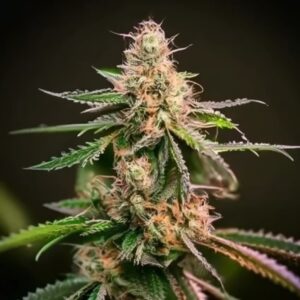


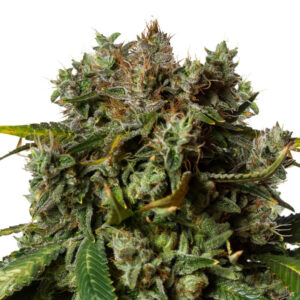

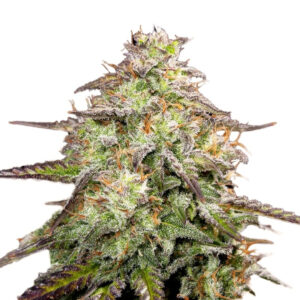







Related Posts
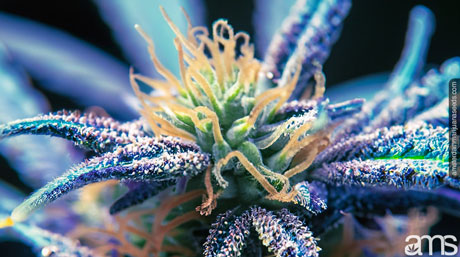
Unlocking the Secrets: Trichome Color, Clarity, and Maximizing the Desired Effects of Cannabis
In this article you will find answers to following questions: what is trichome color?, why is trichome clarity important?, how can you unlock secrets hidden within trichomes?, what factors are involved in the decision-making process?, what are some desired effects of cannabis?, what are some hidden secrets…
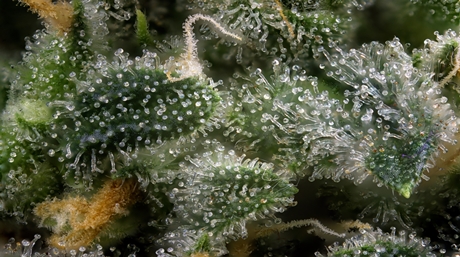
Timing that perfect harvest moment is vital for potent cultivation. But when do you harvest? Use the trichomes as your guide.
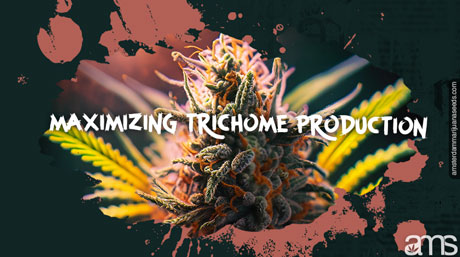
Sure, the cultivation of cannabis, especially in the pursuit of resinous, high-quality buds, is an art that requires precision, patience, and passion. The Amsterdam weed culture, famed for its high-quality strains, is a testament to the commitment and meticulous attention to detail that growers devote to their plants. One of the most crucial aspects of cannabis cultivation is maximizing trichome…